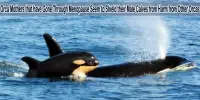It had long been believed that the European storm petrel, the smallest seabird in the Mediterranean, remained the entire year there and that only a small portion of its population made the seasonal migration to the Atlantic Ocean.
According to a study, the majority of European storm petrels that breed in the western Mediterranean migrate to the Atlantic Ocean for the most of the winter.
In contrast to the previously recognized migratory pattern in the central Mediterranean, the findings, which were published in the journal International Journal of Avian Science (IBIS), present a novel migratory map for this little seabird.
The study is led by the researchers Raül Ramos and Teresa Militão, members of the Group on Seabird Ecology of the Faculty of Biology and the Biodiversity Research Institute of the University of Barcelona (IRBio-UB).
Among the participants in the study are Ana Sanz-Aguilar and Andreu Rotger, from the University of the Balearic Islands and the Mediterranean Institute for Advanced Studies (IMEDEA, CSIC-UIB). The smallest seabird in the Mediterranean basin
The European storm petrel (Hydrobates pelagicus) is a long-lived species that only comes to land to breed. It has a low reproductive rate, a somewhat late sexual maturation age, and is particularly vulnerable to risks impacting the adult survival.
There are two subspecies: one (H. p. melitensis), which breeds in the Mediterranean Sea, and another, which is more numerous and breeds on several European islands in the Atlantic (H. p. pelagicus).
“Data from ring recoveries and open-sea sightings on board suggested that the Atlantic subspecies could migrate towards the southern waters of the African continent. In the Mediterranean subspecies, biogeochemical data and geolocation data indicated that most of the wintering took place in this sea,” notes lecturer Raül Ramos, from the Department of Evolutionary Biology, Ecology and Environmental Sciences.
Light-level geolocators were utilized in the study to make assumptions about where the Mediterranean population was over the whole migration cycle. The sun intensity has been measured for almost a year using these gadgets, which were mounted on the birds’ tarsi rather than their backs with a harness as has been customary up until now. Using this technology, the researchers can get further information like sea temperature and saltwater conductivity.
During the entire winter period, the species spends more time resting in the water during the day than at night. This tells us that the species forages mainly at night, and probably feeds on zooplankton and small fish that migrate to the sea surface at that time.
Teresa Militão
“The results allow us to better understand the activity patterns of seabirds throughout the wintering season i.e. when they fly and when they rest in the water, information that was previously unknown,” says researcher Teresa Militão, first author of the study.
“During the entire winter period, the species spends more time resting in the water during the day than at night. This tells us that the species forages mainly at night, and probably feeds on zooplankton and small fish that migrate to the sea surface at that time,” the researcher points out.
Heading for the North Atlantic waters
It is yet unknown where this species primarily feeds. According to other research, it may obtain food up to 500 kilometers away from the colony during the mating season.
During the rest of the year, “everything indicates that, in the case of the population studied, it feeds mainly in the Atlantic, in a marine area that extends from the Canary Islands to the south of Iceland,” the authors say. “The results contrast with the case of the Maltese storm petrel, which maintains its main wintering area in the central Mediterranean.”
For greater access to local resources or to locate the best habitat and climate at each stage of their life cycle, migratory species like the European Storm petrel move frequently between different locations.
Breeding adults in the population under study return to the breeding colony between February and April to reunite with their mate and get ready for breeding. Individuals depart the colony and start postnuptial migration in a highly varied manner between August and December.
The European Storm Petrel, which breeds in the western Mediterranean, would spend the majority of its winters in the Atlantic Ocean, according to the geolocation data that was gathered.
The individuals who were tagged in 2018 and recaptured in 2019 in particular all spent the winter in the North Atlantic, which is in contrast to the migratory trend found in the central Mediterranean.
“The extrinsic and intrinsic factors that determine the different migration patterns of the European storm petrel are still not well understood. According to the first results of the study, some extrinsic factors, such as oceanic conditions, could favour the migration of the population studied towards the North Atlantic, which would then take advantage of the productive oceanic waters during the wintering period,” says Raül Ramos.
The migration patterns of each individual are also influenced by the natal and breeding populations. Other inherent characteristics, including as genetic predisposition, age, physical condition, gender, reproductive success, feather moulting status, and physical condition, cannot be disregarded.
That is why “we need more studies and data to understand the influence of all these factors on the migratory movements of the species,” note the authors.
Knowing the wintering areas in order to protect the species
Our understanding of the ecology of these birds and their distribution throughout their life cycle is improved by the research that was published in the journal IBIS.
“Knowing the wintering areas of this species will help to identify the environmental variables that condition its distribution,” say the authors.
Studies like this one are essential to comprehending how human hazards to the marine environment coincide with the areas visited by marine wildlife.
“On land, during the breeding season, the European storm petrel is threatened by the introduction of invasive predators, such as cats or rats, which prey on eggs, lice and adults, and by the destruction or modification of nesting habitats. In the open ocean, light pollution from ships or oil stations, climate change and extreme weather events such as cyclones or tornadoes also affect the survival of these small seabirds, which should be protected,” the researchers conclude.
















